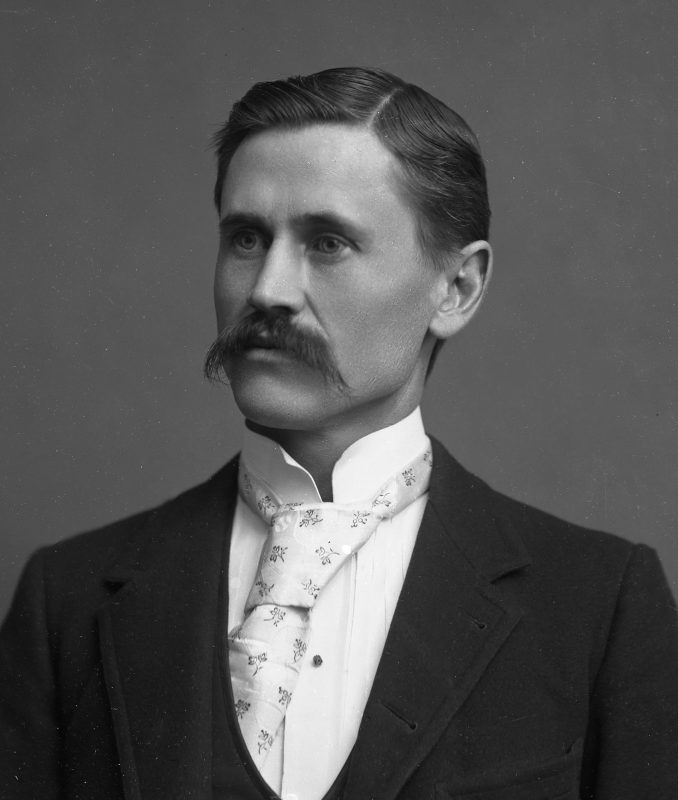More About Sentinel
The Charlevoix Sentinel Newspaper
and the Willard Smith Archive
(1869-ca. 1933)
A Civic Voice Rediscovered
First published on April 24, 1869—the same year Charlevoix County was officially organized—the Charlevoix Sentinel served the settlement of Pine River (as Charlevoix was known by its first settlers), the County and the broader region. Though preceded by the Northern Islander (Beaver Island, 1850) and the Grand Traverse Herald (Traverse City, 1858), the Sentinel was one of the earliest newspapers in northern Michigan and the first to consistently reflect Charlevoix’s civic identity. Its founding editor, Willard A. Smith, envisioned the paper as a tool for making “this northern country known.”
The Editor Behind the Pages
Smith was more than a publisher—he was Charlevoix’s first civic voice and a relentless advocate for its future. His editorials were bold, witty, and unapologetically local. Whether championing harbor improvements or skewering rival editors, Smith’s voice was unmistakable. His “Look Back” columns reprinted news from earlier editions published on the same date ten, twenty-five, and fifty years prior, often accompanied by his signature editorial tone: celebratory, insightful, and sharply critical.
Smith’s influence extended far beyond journalism. Over nearly five decades, he served as postmaster, county clerk, alderman, telegraph manager, and customs deputy. His newspaper office even doubled as the town’s post office. He was a civic engine—rallying support for city improvement, industrial development, and infrastructure projects with tireless conviction. His editorial platform was not just a mirror of public sentiment—it was a catalyst for civic action. Smith stood behind many of the area’s most important achievements through his editorial advocacy, including the opening of the Charlevoix’s upper and lower channels to navigation, numerous improvement projects to Round Lake harbor, the coming of the railroad in 1892, and the birth of Ironton and its early iron industry.
A Family’s Stewardship
The archive was preserved for decades by Barbara Madison (née Snyder), a respected Native American genealogy consultant who lived in Grand Rapids, and whose husband was a direct descendant of Sentinel editor Willard Smith. Madison safeguarded what is believed to have been Smith’s personal reference collection—materials he continued to consult through his time at the newspaper. Smith’s son-law Ira Adams took over the paper after Smith’s death in 1917, leading it until July 1936. The paper continued briefly under the direction of Shirley A. Henry until its final issue on October 30, 1936. The archive came to the Charlevoix Historical Society in September 2025 by gift of Madison family, following Barbara’s death earlier in the year.
From Microfilm to Modern Memory
In the 1970s, Madison loaned the archive to the Michigan State Library for microfilming. Unfortunately, the process did not meet archival standards. The resulting microfilm—now hosted on the Internet Archive—is widely used but suffers from poor focus, low contrast, physical damage, and heavy wear. Much of the content remains completely illegible. These degraded copies offer only a shadow of the original clarity, detail, and editorial nuance.
Why It’s Urgent
While a handful of early editions — particularly those from first several years of publication — were printed on durable cotton rag paper and remain remarkably intact, the vast majority of the archive was produced on highly acidic wood pulp stock. This paper, common in newspapers from the late 19th century onward, is chemically unstable and prone to rapid deterioration. It contains lignin and other impurities that react with light, humidity, and air, causing the paper to yellow, embrittle, and fragment over time.
Even under ideal storage conditions, wood pulp paper continues to degrade due to its ‘inherent vice’—a term used in preservation to describe materials that self-destruct because of their own composition. According to conservation experts, newspapers printed on this stock are among the most friable and vulnerable materials in historical collections. Tears, crumbling edges, and fading ink are already evident in many issues. Without immediate digitization, large portions of the archive may be lost forever.
Digitization is not just a preservation strategy—it is a rescue mission for the future. It ensures that Charlevoix’s earliest civic voice, the editorial legacy of Willard A. Smith, and Charlevoix’s foundational history from its earliest days can be saved before time sends it into the irrecoverable past.
Why It Matters
Digitization will preserve not only the text but the visual richness of 19th-century journalism: woodblock illustrations, plate engravings, and early halftone photographic reproductions that microfilm rendered indistinct. These visual elements are not merely decorative—they are documentary artifacts that help researchers identify locations, recognize likenesses, and interpret historical context.



